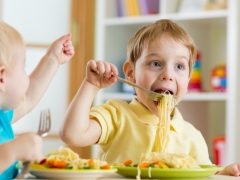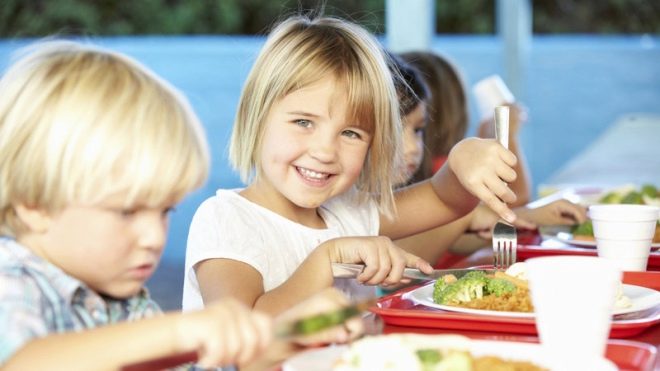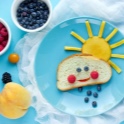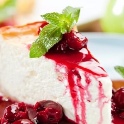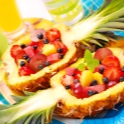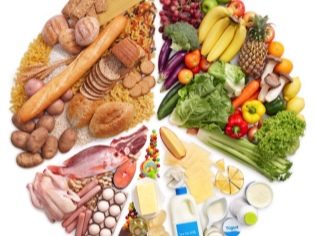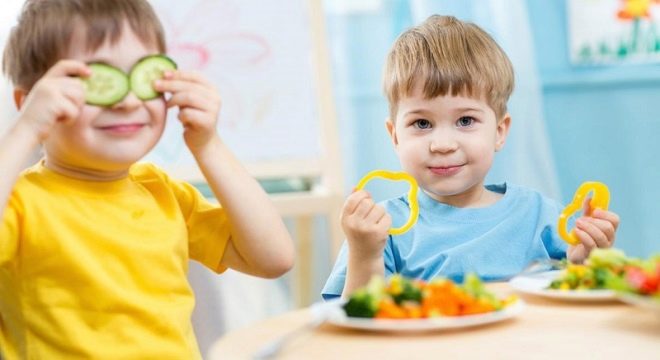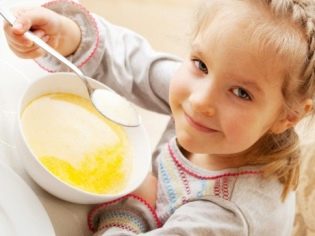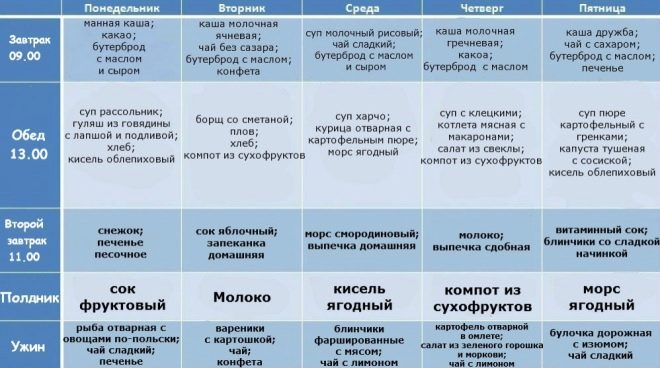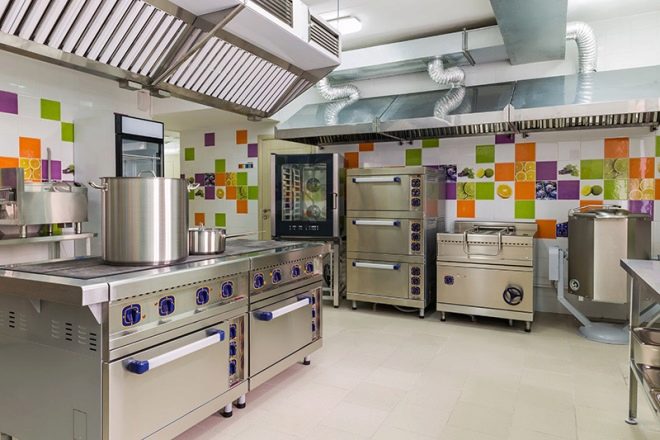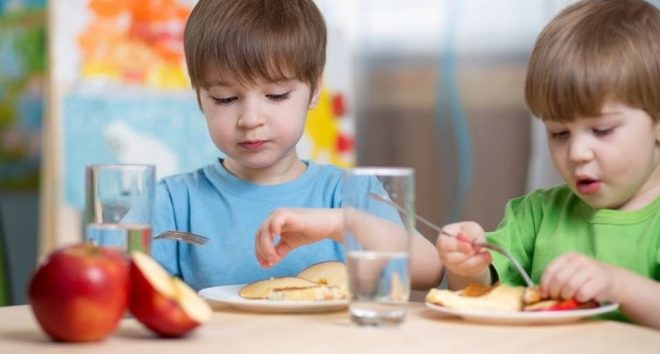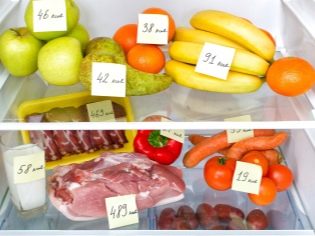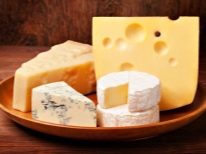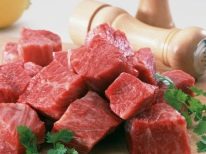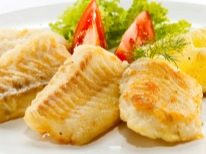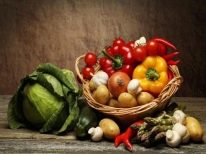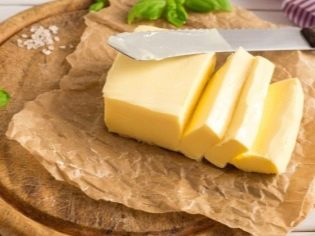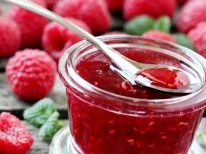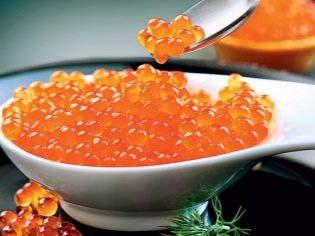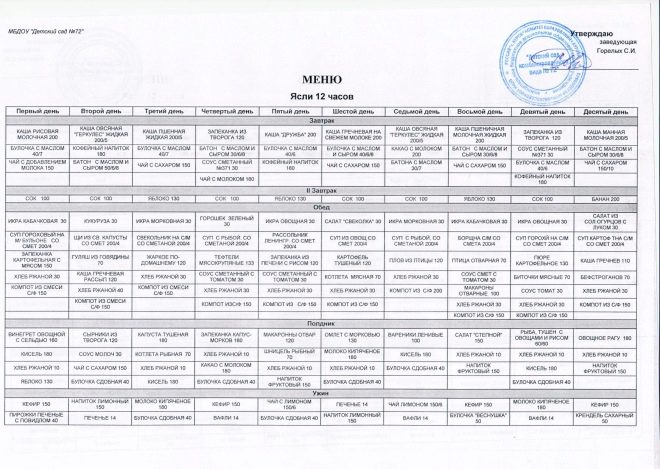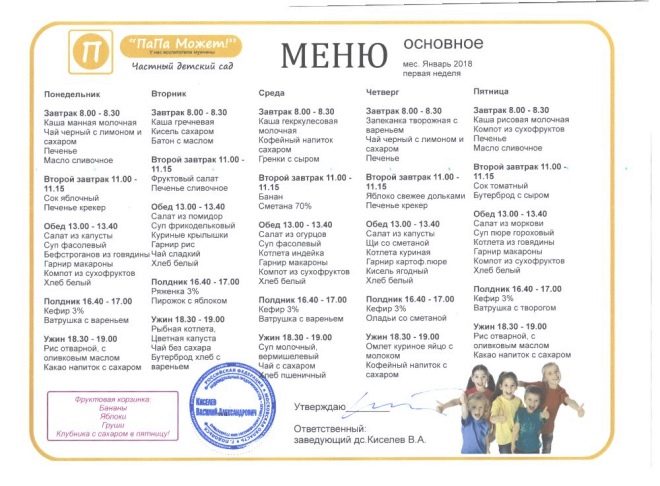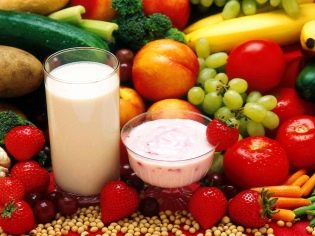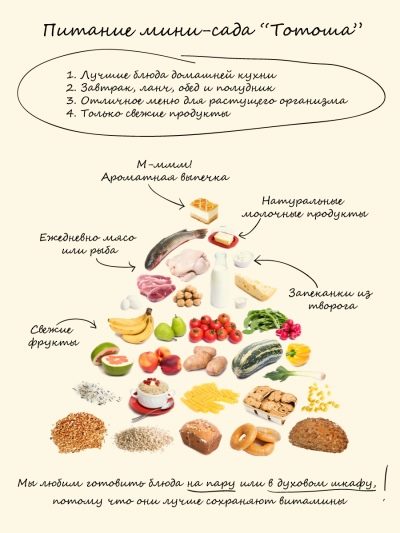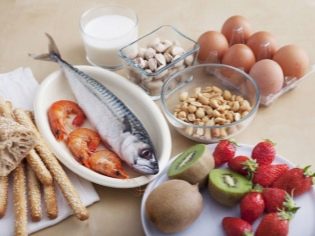Kindergarten menu for children
Meals in the garden - a painful question for parents. If the baby has yet to go to kindergarten, the mother is worried about whether the child will eat there, whether he will like the proposed menu. If the child is already going to the kindergarten, it is always interesting if he eats up, if he is not hungry, waiting for him to be taken home. Sometimes there are other difficulties - in which kindergarten to give the child a vegetarian or baby with food allergies.
In this article we will describe in detail what the kindergarten menu is, what principle it is made up, how to teach a child to eat everything they give in a preschool institution, and how to choose a kindergarten for a baby with non-standard nutrition.
Principles of catering
Baby food in any kindergarten of any region of Russia is rather tightly controlled. The whole principle of his organization is subject to strict standards. The main principle is nutritional. Food for pupils of a preschool institution should provide the children's body with all the substances necessary for growth and normal development.
In the daily diet, certain proportions of proteins, carbohydrates, lipids, vitamins and minerals are necessarily present. Also plays an important role overall calorie meals, because food for children should be not only pleasure, but also sources of energy.
If the food is organized properly, children are less likely to get sick, feel better, show more abilities in training activities.
Every day, the diet of children necessarily includes meat, fish, milk or dairy products, eggs, butter, vegetables and fruits, bread, cereals. If we exclude at least one group of food products, the general incidence among pupils will inevitably increase - such experiments were conducted in the Soviet Union. The existing requirements and principles of baby food in pre-school educational institutions are not invented out of nothing, they fully rely on practice, experience, mistakes of the past.
To collect all these products in the menu is important, but alas, not enough to achieve a result. Therefore, the second principle of baby food in the kindergarten sounds like this: “Meals should be beautiful and attractive.” Even a very useful meatballs or salad the child will not eat if the feed was completely unattractive. And no arguments about the benefits in this case will not help.
The third principle is regularity. Existing regulations imply a minimum of 4 meals, three of which should contain hot dishes. Why this is done, to explain unnecessarily - without a hot meal, the child's digestion cannot be healthy, and the metabolism - full. Hot meals should be provided to all children who stay in the kindergarten for more than 3.5 hours per day. This is a rule that applies to all forms of gardens - private, municipal, departmental, etc.
The intervals between meals should be 3.5-4 hours. And this is also the rule. If you make longer intervals, then in a few weeks it will affect the health of the pupils - memory will decrease, immunity will weaken. Until preschool age, pediatricians give unambiguous recommendations - eat every 4 hours.
Pupils of the gardens receive up to 70% of the daily ration in kindergarten.
That is why educators, doctors, parents must be interested in what and how a child eats, whether he is fed up.
In kindergartens specialized (for children with disabilities, with a sports bias), the principles of nutrition in general must comply with the standards, but it is allowed beyond the required to add some products, taking into account energy costs. For example, children with low mobility due to diseases are advised to reduce the number of cereals and confectionery products and add fruit, while young athletes, on the contrary, add more carbohydrates, because their energy costs are several times higher. On the basis of the same principle, in summertime, the feeding of all preschool children should be easier than in winter.
Age features
For organizers of baby food there are only two children's ages - from 1.5 to 3 years and from 4 to 6 years. For these two groups of children, the menu is organized with some differences. To begin with, it should be noted that the caloric content of different meals is not the same. Breakfast accounts for about 25% of the daily calorie requirement. At lunch, your child "eats" about 40% of the calories required for him, for an afternoon snack - about 15%. Thus, for dinner (and the child will have dinner at home) parents should provide for such food, which will give him the remaining 20-25% of calorie needs, not more. In kindergartens with 24-hour stay of pupils, this approach is implied.
In general, kindergarten chefs prepare the same basic dishes for all ages - soups, cereals, meatballs and casseroles. But when serving for the nursery, age-related features will be taken into account - babies will be cut into small pieces of vegetables in a salad, oranges that may cause allergies will not be served, replacing them with apples. Children of the older age group increase portions, since their energy requirements are higher.
Documentation
Have you ever wondered why when entering a kindergarten, smells immediately return us, adults, to memories of our own kindergarten childhood? The answer to this question is very simple - modern children are prepared according to recipes that were approved in the USSR. With minor changes, but still food in the kindergarten continues to line up according to the established traditions and the existing regulatory framework.
The director of the kindergarten can decide what to feed the children, but only on the condition that the compiled menu will meet the requirements and documentation, if the control calculation shows that the caloric content is not disturbed.
So that parents understand why they do not give fries and hamburgers to the beloved kindergarten, but offer oatmeal and fruit compote, You should know what documents govern the organization of food (and, if desired, and get acquainted with their content):
- SanPiN 2.3.2.1940-05 - "Sanitary rules for the organization of baby food";
- SanPin 2.4.1.3940-13 - "Sanitary and epidemiological requirements for catering in pre-school";
- Federal Law No. 52-ФЗ - “On the Sanitary-Epidemiological Well-Being of the Population of Russia”.
In addition, a certificate of quality, invoice and veterinary certificate must be available for every product.
If the kindergarten is private, it gives him the opportunity to purchase food wherever he wants, but at any time he should be ready to check the regulatory authorities, and the Federal Service for Supervision of Conservation and Health very much likes to visit private kindergartens with revisions.
Municipal kindergarten of choice is deprived - products are delivered to it by an organization that has won a municipal tender. It should be noted that the lack of competition very often leads to sad consequences - the products are delivered the cheapest, and sometimes do not meet sanitary requirements. Carry products for kindergarten drivers who are required to issue a sanitary book. In the kindergarten, the nurse takes the goods, and all labels from products with a production date are stored for at least two days.
At the disposal of the head of the kindergarten there is always an approximate ten-day menu, with which any of the parents may at any time become familiar. There is also an exact menu for the week. He is assured and signed a week in advance.If you have any complaints or questions about the organization of food in a particular kindergarten, the relatives of the child have the right to apply to the regional Federal Service.
It is not necessary to go and write a statement or complaint. You can report violations by phone department, every appeal is checked. If the state social organization is responsible for the meals in the kindergarten, then you can also complain to the municipality and the leadership of the organization itself.
Security and control
In order for food not to harm children prone to allergies, diseases of the gastrointestinal tract, methods of cooking in the kindergarten are quite limited. They will not give a child here fried potato or popcorn. All dishes are thoroughly heat-treated, but only by cooking, baking at high temperatures, stewing, steaming. Recently, most kindergarten kitchens are equipped with such useful equipment as a combi oven.
A cooked dinner will not be delivered to the group until the chef, the head of the kindergarten’s kitchen (or his deputy), and the nurse checks the quality of the dishes. Each of the controllers puts his signature in a special form of reporting. With this signature, these people take full responsibility (moral, but more still legal) for the possible consequences.
After checking the daily sample is taken. If the dish is portioned, then the whole portion is included in the sample. If not portioned (soups, second courses, cold appetizers), then the sample is at least 100 grams. The sample is stored in a separate refrigerator. It is always marked on it - the date and exact time of preparation, the date and time of sampling.
Store samples laid at least 48 hours. This is done so that the control authorities and sanitary specialists can at any time take samples for laboratory research, if in the kindergarten, for example, there was a massive or single poisoning, if there were complaints from parents about poor-quality and bad food.
Reheating dishes left over from yesterday is strictly prohibited. Also, you cannot feed preschool children with dishes that were cooked somewhere else, not in the kitchen of the preschool institution.
Compliance with safety rules is in the interests of the kindergarten’s leadership, for violations can be followed by huge fines. But most importantly - the leadership is responsible for the life and health of the child, who is in preschool. Causing harm to a child with poor-quality food can lead to criminal liability for officials.
New standard
A new standard for baby food in kindergartens was approved in 2006. The basic requirements remained the same, but the caloric and product requirements were revised. Now the kindergarten's menu is recommended to be made for 20 days, and not one dish in it should be repeated.
Parents can be calm - with the diversity on the table in the kindergarten, now everything is in order. The menu for each day, according to the new standards, is made in compliance with the following energy value:
- children from 1.5 to 3 years old - 1540 Kcal;
- children from 4 to 6 years old - 1900 Kcal.
Four meals a day is now required for all gardens. This does not mean that the child will be fed more. Just introduced such a thing as "second breakfast", which the child can give an apple or banana in between the first breakfast (main) and lunch.
As for the list of foods that must be in the diet before school, it is expanded. Now the following daily ration is documented:
- milk, dairy products - at least 390 ml per child aged 1.5 to 3 years and at least 450 ml per child aged 4 to 6 years;
- cottage cheese - for children from 1.5 to 3 years old at least 30 grams per day, for children older - at least 40 grams;
- sour cream - babies need at least 9 grams per day, children 4 to 6 years old - 11 grams;
- cheese - babies should be given 4.3 grams per day, for big children - 6.4 grams;
- beef - at least 50 grams to children of toddlers and younger groups per day, at least 60 grams to children of middle and senior groups per day;
- poultry meat (chicken, turkey) - at least 20 grams per day for toddlers and at least 24 grams for children from 4 to 6 years;
- fish (fillet) - to kids not less than 32 grams, older children - 37 grams;
- eggs - half of eggs are laid to children under 3 years of age, and a little more than half (1.6) to children from 4 to 6 years;
- potatoes - 120 grams to babies and 140 grams “big”, but this is the autumn norm, in winter it increases slightly;
- vegetables and fruits - for children from 1.5 to 3 years old - 174 grams, for children from 4 to 6 years old - 221 grams.
In addition, the daily ration must include juices, fruit or vegetable drinks, bread, cereals, pasta, vegetable and butter, tea, cocoa, sugar and salt.
Recommendations to the new standards require kindergartens to cook from beef of the first category (boneless), veal, lean pork and lamb, chicken and rabbit. Sausages and wieners are allowed to be given no more than 1-2 times a week after careful cooking.
Eggs can be given boiled or in the form of an omelet. Milk should have a fat content of 2.5 to 3.2%, and cottage cheese should have no more than 9% fat. Butter should be real, have a fat content of 82.5%, vegetable oil is allowed only if necessary, dressing salad or vinaigrette.
Do not think that the principles of nutrition in the kindergarten do not take into account the great love of children to sweets. Documents are allowed once a week to give pupils chocolates. Slightly more often you can give marshmallow, marshmallow or marmalade. Jams and preserves can be tolerated only if they are factory-made, and sponge cakes can be given only when they are cooked without cream.
Most of the questions arise regarding fruits, because not all of them are well tolerated by children of preschool age. All children are allowed pears, bananas, plums, apples, berries (excluding strawberries). There are citrus fruits in the list, but it is recommended to give them only taking into account individual tolerance. There are even new standards in the standards unprecedented for the Soviet kiwi and mango gardens. But these tropical fruits are allowed to give only children who are not prone to food allergies.
There are in the list of recommended foods for children and foods that cause bewilderment and questions. For example, canned fish, stew, natural coffee. Sensible parents try not to feed their child with such products. However, a complaint to the supervisory authority that the child in the kindergarten was fed soup with canned food would not be effective, because such permission exists at the normative level with the organizers of baby food.
A lot of questions can cause canned vegetables, condensed milk. The rules do not prohibit giving preschoolers creamy ice cream. In practice, as a rule, it lacks budget funds, as well as the last two points - red caviar and lightly salted red fish (chum salmon). Such delicacies are not considered mandatory, but are on the list of recommended ones, subject to the availability of sufficient funding.
Menu examples
An example of the menu of the municipal garden you can see below.
It is always approved by the head of the kindergarten.
It can usually be seen at the entrance to the group or in the locker room of the kids.
The menu of private gardens is usually more interesting and varied.
Preparing for the garden
And now is the time to talk about how to instill in the child a love for kindergarten food, because it is in preschool that he has to get most of all daily calories and it would be great if the child did not refuse to eat in a group.
It is best to take care of this in preparation for visiting the kindergarten. About a couple of months before the children are sent to kindergarten, and preferably in half a year, you need to make a friendly visit to the chosen pre-school institution, talk to the manager and ask her for a copy of the ten-day menu.
On the way back, you should look into the kitchen, call the cook and ask for recipes of the main dishes. After learning that this is required for a future pupil or ward, DOW employees usually come into the position of mother and tell you how and what you need to prepare.
It is easy to guess what to do with the extracted information further. Even if your baby is used to eating pizza and convenience foods from the supermarket at home, it’s quite possible to change his eating habits. First cook one or two dishes from the garden menu. If the child protests and spits, do not despair - this is temporary. The day will come when the baby will gladly eat the porridge offered according to the Sadikovsky recipe or pasta casserole.
Gradually introduce additional meals, no more than 1-2 per week. And positive results will be achieved in a few months. When the baby comes to the kindergarten, for him the event itself will become shock and stressful. Why aggravate his condition with unfamiliar and unfamiliar food? After preliminary preparation, the son or daughter will eat what is given in kindergarten almost from the first day and the mother will not have too much cause for concern.
Do not forget that it is best to offer dishes according to the kindergarten menu in accordance with the dietary regime adopted in kindergarten:
- breakfast - from 8 to 9 am;
- the second breakfast is at 10.30;
- lunch - from 12 to 13 hours;
- afternoon tea - 15.30-16.00.
In this case, dinner (which you, by the way, can already prepare according to your own menu, as usual) will fall on the interval between 18.30 and 19 hours exactly.
Important nuances
Vegetarian child
The question of whether the child should be taught to vegetarianism - the question of a separate article. To achieve a definite answer to it is almost impossible, because the opinions of supporters and opponents of vegetarian food are different. But if it so happened that your child is a vegetarian, and the parents do not want to change anything in his eating habits, you will have to sweat a lot before you can find a kindergarten in which the child will be provided with such food.
The problem is so big that sometimes mothers decide not to take the baby to the kindergarten at all, and stay with him at home until the school itself. Separately, no one will cook the child in the municipal garden, as they will not be allowed to bring food with them from home. There is a way, although it is sometimes difficult to find it.
Many parents who faced such a problem came to the conclusion that it was optimal to find a vegetarian kindergarten, but there were just one and two of such people in Russia. If finances allow, you can send the child to a private kindergarten (always with the choice of food, prescribed in the contract). There, the kid will be offered only those dishes that mom or dad will choose for him from the existing list.
At the very least, you can find a home garden organized by other vegan parents. However, it should be understood that visiting such a kindergarten can be dangerous, because at home there are no guarantees of compliance with sanitary norms and rules. And the pedagogical component of the home garden raises a lot of quite logical questions.
If you cannot afford a private kindergarten, there is no such kindergarten at all in the city where you live, and it’s scary to send a child to a home kindergarten, You can try the following schemes:
- A visit to the usual garden, but before lunch. From morning to afternoon, the child will have time to talk with his peers, and for breakfast, as can be seen from any menu in any kindergarten, meat products are not served. The downside is that the mother will not be able to fully work, because before lunch the child will need to be taken home. If there are no grandmothers who are free from work, this problem is almost impossible to solve.
- A visit to the usual full-time kindergarten by agreement with the head. The option is unlikely, but why not try? If the manager agrees to some indulgences for one or two pupils (usually there are no more vegetarians in the kindergarten), then the tutors will be given a clear and specific indication - not to give meat and fish to a certain child. Minus - in the human factor. The teacher can "not see", forget, not control. The child will remain without first courses, since they are overwhelmingly all prepared in meat or fish broth.
The presence of food allergies
Children with a penchant for food allergies sometimes have very difficult relationships with kindergarten, and parents of such children with caregivers. To eliminate unpleasant situations, you must immediately put everything in its place. Take your little allergy and take you to an allergist. The doctor carries out tests and prescribes blood tests, after which he makes a detailed list of all products for which an inadequate reaction of the body can develop in the baby. With this list, go to your pediatrician and ask for recommendations for a nurse and a nursery kindergarten №…
With the conclusion and recommendations of the pediatrician, you go to the kindergarten, show them their manager, the medical officer. Theoretically, they can refuse to visit a kindergarten, but in practice they will not, because the prosecutor's office will certainly be interested in the reasons for refusal.
Ideally, the nurse will exclude allergens from the child’s daily servings. Not ideally, parents will do it themselves - for these purposes, when entering the group, they always hang up the menu today. Clear advice on what can and cannot be given to your child from the daily menu, the teacher will receive in the mornings when you bring the child to the kindergarten.
No one will guarantee anything, and it is possible that the notorious human factor will again appear and in the evening you will take the reddened baby with a terrible rash, allergic rhinitis and cough from the group home.
findings
No matter how parents and children condemn the garden menu, it is in fact more useful for a growing child than a home menu. A large staff of nutritionists, pediatricians, endocrinologists, food technologists is involved in the development of norms and correlations of products for preschool institutions. The latest standards were approved by the Institute of Nutrition and Dietetics, RAS. When preparing a dinner, can you guarantee that you will provide the child with all the necessary substances in exactly the quantities that meet his needs? Not.
Lunch or breakfast in the kindergarten is not only a meal, but also a great social lesson, at a table that the child learns only if he goes to kindergarten. Homemade dinners are another matter, at the table the child is a real “king of the hill” and around him mom and spoon spinning and grandmother with a napkin. The ability to take food among your peers is an important point of growing up and becoming your child.
To provide the child with such a variety of dishes that the most ordinary kindergarten offers, poor mothers will have to cook around the clock, and the next day they will start cooking again, because yesterday's soup is no longer “quoted”. It is clear that this does not happen. Cooked borsch in the family is eaten for 2-3 days, and the cutlet is enough for 1-2 suppers, and this is normal. But do not forget that the metabolism of the child is very fast, intense, which is why the standards of baby food in the kindergarten and mean the maximum variety of the menu. A garden can give it, but a home stay cannot.
With all this, relying only on decency and law-abiding kindergarten workers is not worth it - all employees are decent and law-abiding. Parents should be interested in what they feed the child. In every kindergarten there are parents who are included in the commission for monitoring the quality of baby food. Enter among them, or at least get acquainted with them, so that the questions and problems that arise are easier to solve at the legal level all together.
About what feeds children in kindergartens, see the following video.
